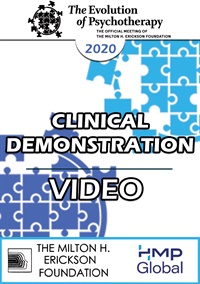EP20 Clinical Demonstration 11 - Learn to Read Brain Scans: 50 Scans in 60 Minutes - Daniel Amen, MD
- Average Rating:
- Not yet rated
- Topic Areas:
- Neuroscience | Clinical Demonstrations | Psychotherapy
- Categories:
- Evolution of Psychotherapy | Evolution of Psychotherapy 2020
- Faculty:
- Daniel Amen, MD
- Course Levels:
- Master Degree or Higher in Health-Related Field
- Duration:
- 1 hour
- Format:
- Audio and Video
- Original Program Date:
- Dec 13, 2020
- License:
- Never Expires.
Description
Description: This engaging session offers a fast-paced tour through fifty brain scans that reveal how imaging transforms mental health practice. Participants learn to recognize patterns linked to trauma, addiction, mood disorders, and toxicity, and discover how SPECT imaging helps differentiate biological from psychological causes. The session provides practical insight into using brain-based evidence to guide treatment, reduce stigma, and inspire hope for healing.
Syllabus Description: Based on the world's largest database of brain SPECT (single photon emission computed tomography) scans, Dr. Amen will teach attendees about brain SPECT imaging and then show 50 cases in 60 minutes, including cases of depression, anxiety, attention deficit hyperactivity disorder, post traumatic stress disorder, schizophrenia, traumatic brain injury, addiction, and dementia.
Educational Objectives:
- Learn how to understand what SPECT scans measure in the brain
- Get a preliminary understanding of how to look at the SPECT images
- See the multiple patterns for traumatic brain injury
*Sessions may be edited for content and to preserve confidentiality*
Credits
Handouts
| Learn to Read Brain Scans (34.9 MB) | Available after Purchase | ||
Faculty

Daniel Amen, MD Related Seminars and Products
Dr. Daniel Amen is a physician, double board certified psychiatrist and ten-time New York Times bestselling author. He is the Founder and CEO of Amen Clinics in Costa Mesa and San Francisco, California, Bellevue, Washington, Reston, Virginia, Atlanta, Georgia and New York City. Amen Clinics have the world’s largest database of functional brain scans relating to behavior, totaling nearly 100,000 scans on patients from 111 countries. Dr. Amen is a Distinguished Fellow of the American Psychiatric Association, the highest award they give members, and is the lead researcher on the world’s largest brain imaging and rehabilitation study on professional football players. His research has not only demonstrated high levels of brain damage in players, he also showed the possibility of significant recovery for many with the principles that underlie his work.


